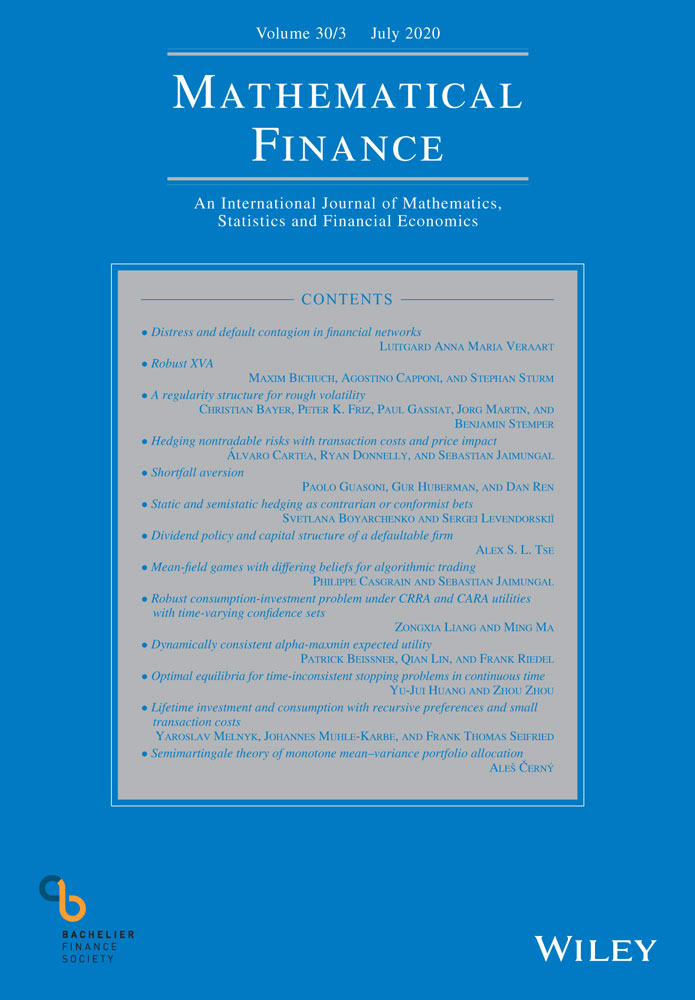Dividend policy and capital structure of a defaultable firm
Abstract
Default risk significantly affects the corporate policies of a firm. We develop a model in which a limited liability entity subject to default at an exponential random time jointly sets its dividend policy and capital structure to maximize the expected lifetime utility from consumption of risk-averse equity investors. We give a complete characterization of the solution to the singular stochastic control problem. The optimal policy involves paying dividends to keep the ratio of firm's equity value to investors' wealth below a critical threshold. Dividend payout acts as a precautionary channel to transfer wealth from the firm to investors for mitigation of losses in the event of default. Higher the default risk, more aggressively the firm leverages and pays dividends.
Open Research
DATA AVAILABILITY STATEMENT
Data sharing is not applicable to this article as no new data were created or analyzed in this study.




